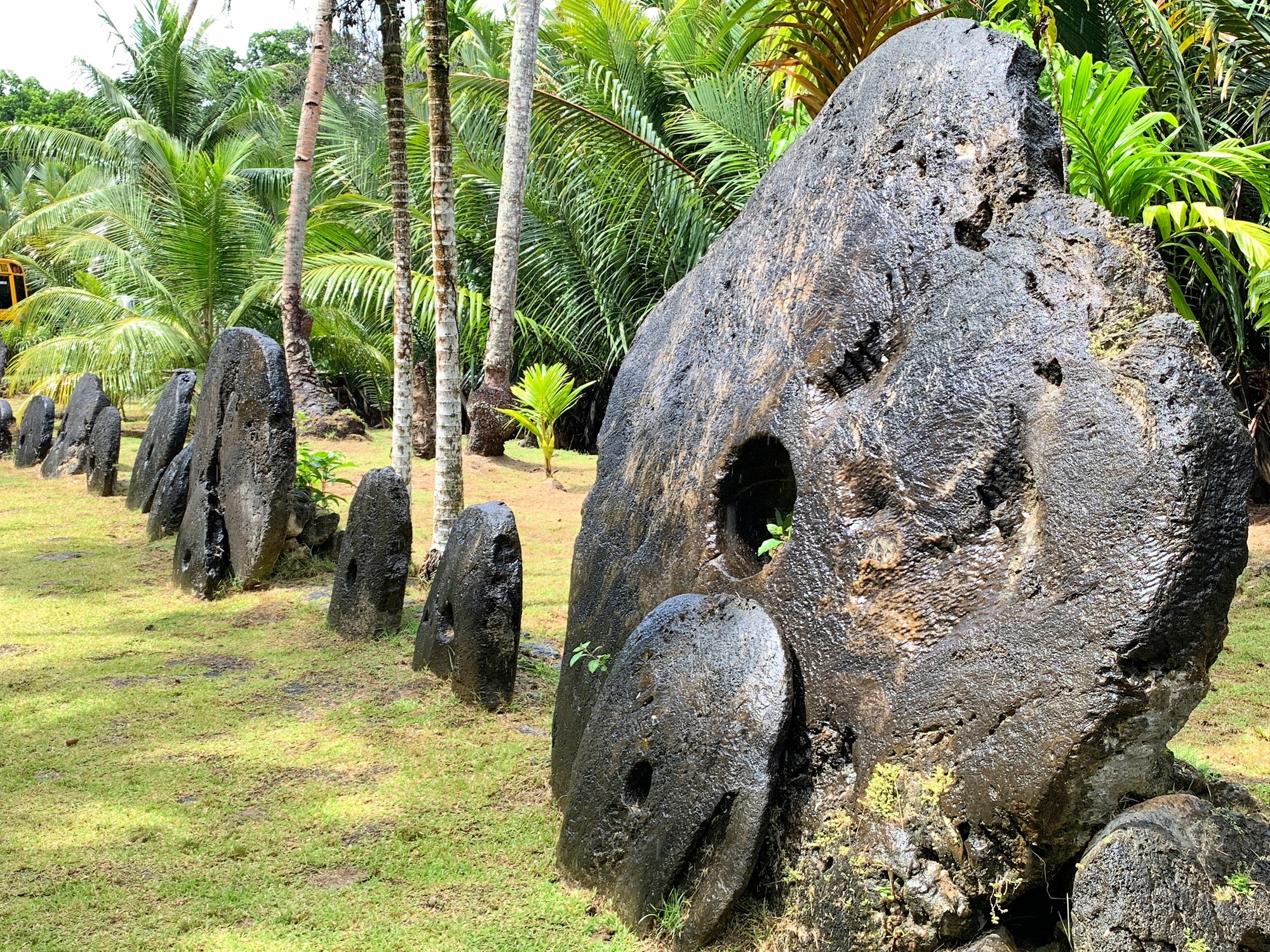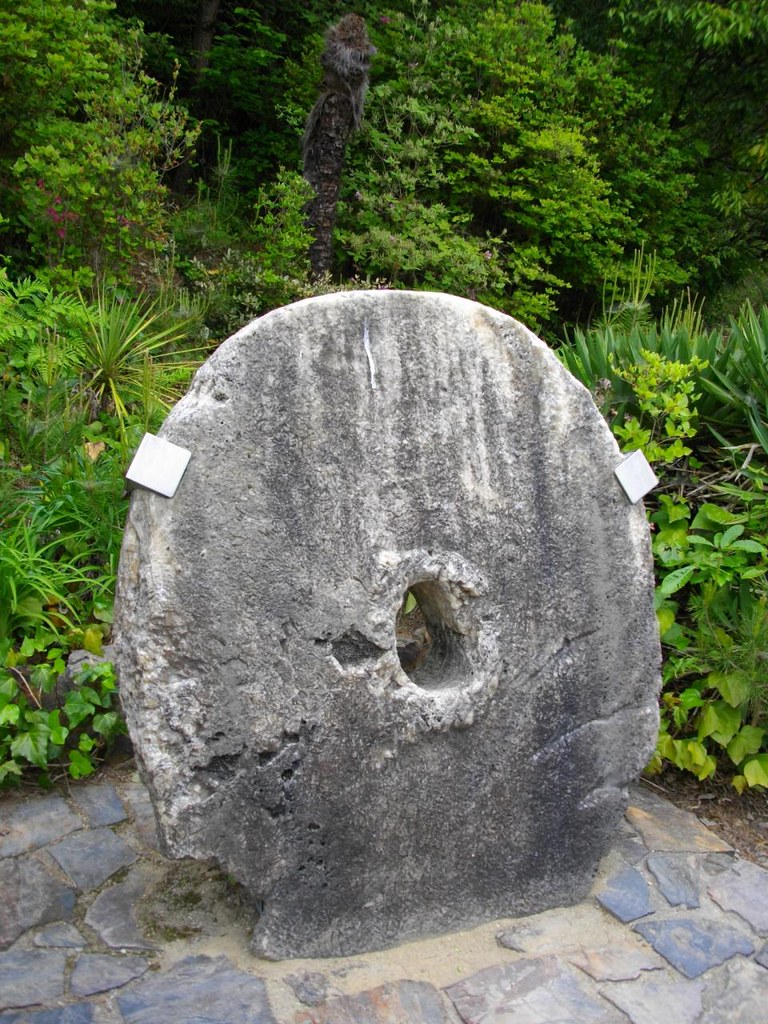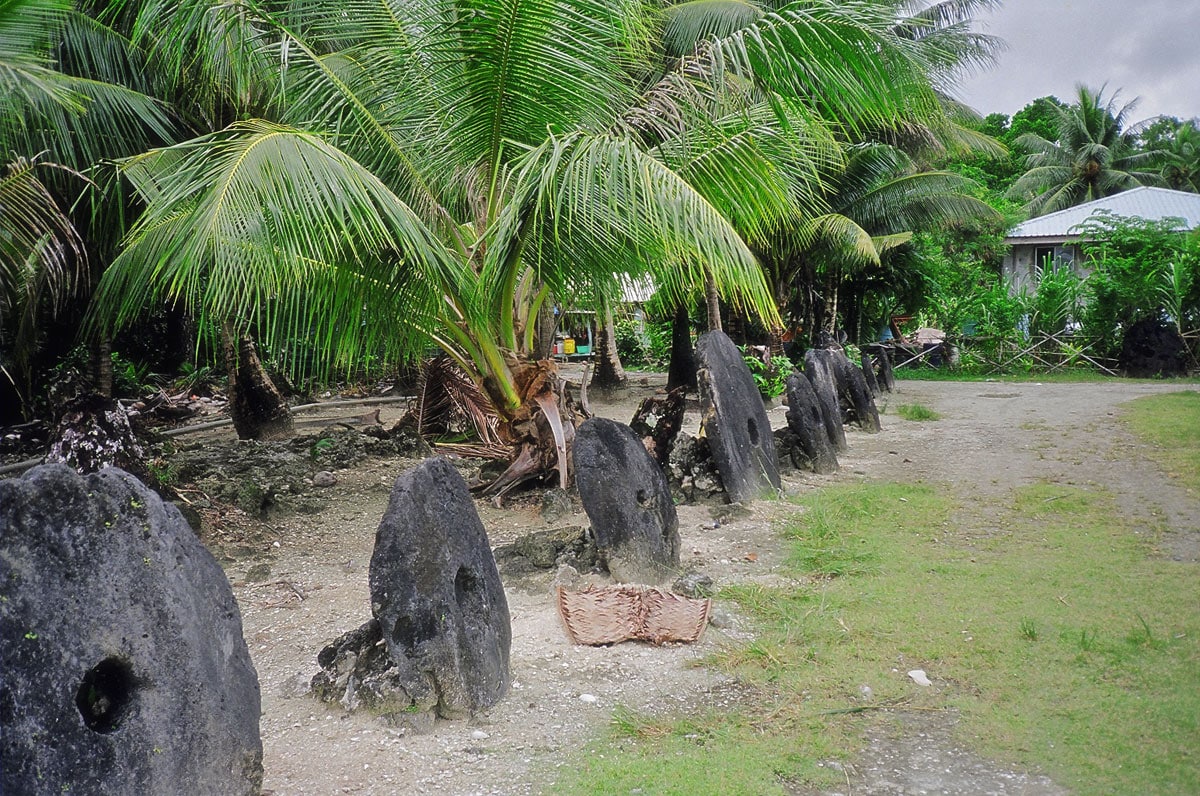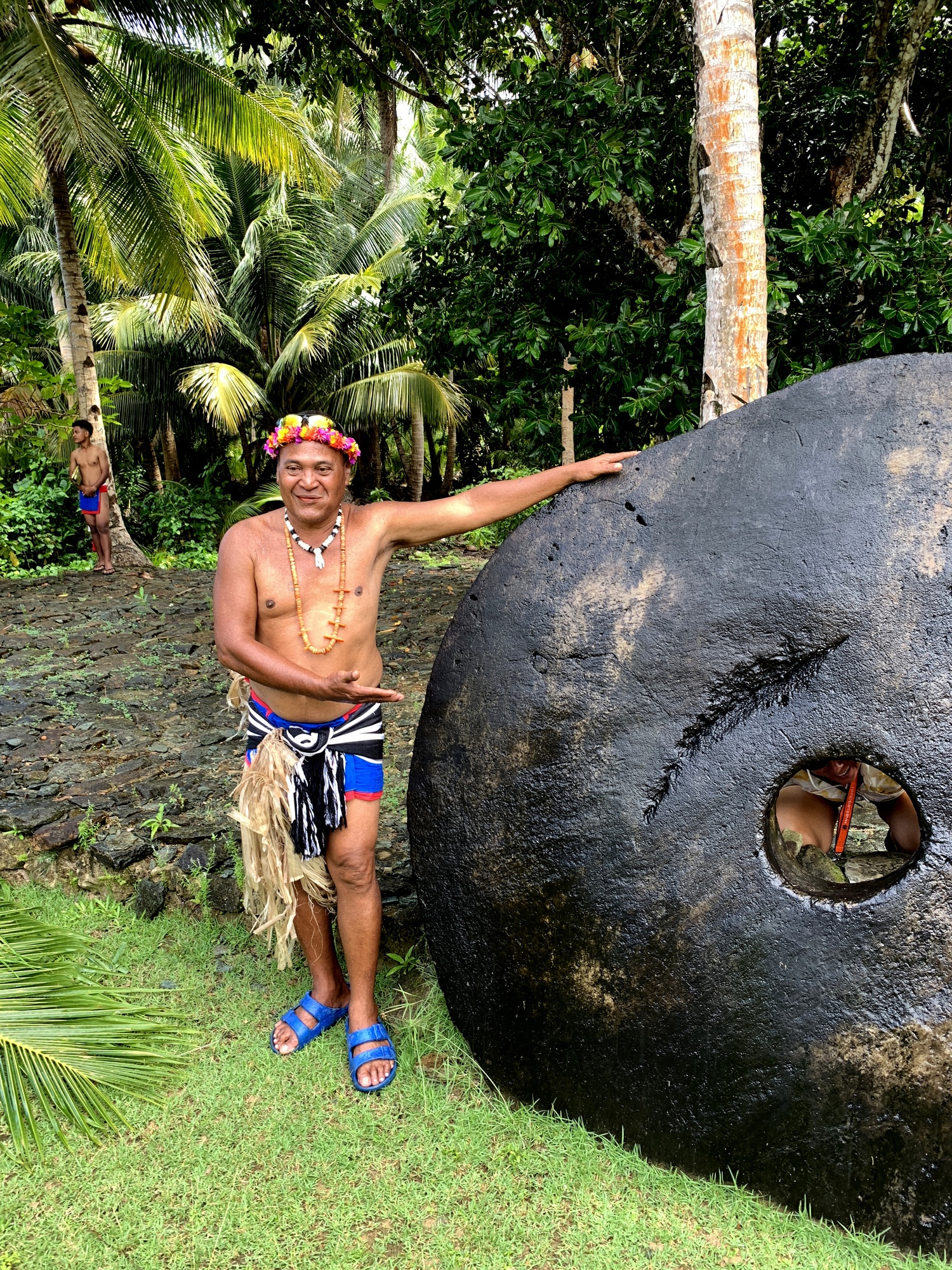

2021
The Stones Of Yap
An introduction to the islands' fascinating monoliths.
Yap is a small group of islands found amongst a larger group of islands, known as Micronesia, which is located in the South Pacific Ocean, quite literally in the middle of nowhere and one of the most remote places on Earth. The islands are full of idyllic sandy beaches, palm trees, vast horizons and big doughnut-shaped rocks. However, these mysterious stones aren’t lining the perimeter of the island to protect it akin to Easter island, it’s not-so-close neighbour, here they serve a very different purpose.
Beautifully hand-carved and with a fascinating story, these rocks appear other-worldly. They give the sense that they harbour some kind of fantastic inner power – which as it happens, may not be all that far from the truth.
As you can imagine the stones can be pretty hefty and so not moved very often, but what you might not imagine is what they are used for. These rocks were the islander’s choice of money and at the heart of their economy for at the very least several hundred years, but potentially even millennia. Yes, that’s right, the giant disk-shaped rocks you see in the pictures are the Yapese equivalent of a gold bar or a big bag of cash. What a wonderfully quirky take on the idea of money.
The Yapese call these carved, circular rocks Rai stones, or Rei, (pronounced raay). They were also previously known colloquially as Fei stones in the southern part of Yap, but that was dropped in the early part of the 20th century.

The largest of these stones is almost 4 meters in diameter, weighing a whopping 4 tonnes – that’s about the same as a pretty big elephant, or double the weight of the average car. Imagine paying for your new car with something that weighed double the weight of the car itself and needed dozens of people to help carry it! Seems ridiculous on the face of it doesn’t it, but as we will see in future articles, the obvious drawback of its sheer size and weight, in turn, gives it some of its unique economic qualities.
Rai stones are made from crystalline limestone, a sedimentary rock, consisting primarily of calcite, which is made up of calcium carbonate. However, this formation of rock is not found on the island of Yap. Instead it is made of metamorphic rock, which is formed at high pressures deep within the Earth’s crust and often brought to the surface by the movement of tectonic plates. The rock found on Yap is harder than limestone, including marble and quartz. There is a legend that the islanders originally tried to use a local quartzite rock to make Rai stones, but this didn’t happen due to clan disputes.
So instead the Yapese had to go and quarry the rock from another island, called Palau. This island was 400km away from Yap as the albatross flies, but due to the strong ocean currents and winds of EL Nino territory, a journey from one island to the other could end up being more than double that distance. Once mined, the stones were transported back to Yap on canoes and rafts.
There are several legends or tales as to how the stones came about. One says a divinity told the villagers to go and visit the island of Palau, where they found this sparkling stone and carved it into various animals, possibly deities, including a turtle, fish and full moon. The latter was chosen as the shape of the Rai, most likely, or at least partly, because of their sheer size and the need to transport them. A doughnut rolls better than a fish.
Another legend tells of how a group of Yapese fisherman were forced far away from their island and onto the island of Palau by a violent storm. While on the island, they found this beautiful sparkling stone and carved it into some fish, which they would take back to their king or chief in place of the fish that the storm prevented them from catching. Replacing the lost-catch with fish carved from stone, presumably to show their boss that they were actually stranded by a storm and not just slacking off, is a great metaphor and one that is indeed transferred over to the Rai stones, as they themselves are carved physical representations of money.

These fascinating stone disks are not all towering monoliths, they actually vary in size from as little as 3.5cm(1.4in) in diameter, all the way up to a 3.6m(12ft) giant, however most are between 30cm(12in) and 50cm(20in). They all have a hole in the centre, around 1/6th of the stones diameter in size. Some are thicker in the centre of the stone, with the thickness of the stone tapering down, or stepping down, to a thinner outer edge. The holes were designed for logs or bamboo poles to be inserted and help with the transportation of them. Some have additional holes – one might wonder if these holes are there purely for decoration, or were they left over from rock bored out and carved into smaller denominations, without physically reducing the overall size.
Surely there are easier ways to give change, than to have to make it every time it’s needed?!

One might think that because they look somewhat like a set of Fred Flinstone’s wheels, that they were relics from a pre-historic time, but actually they were still being produced as recently as last century. No-one knows the exact origin of the Rai stones or when they first started to be used as money, but there are flat-rocks on the island that can be dated as far back as 2,000 years ago and carbon-dated beads with the similar disk shape from around 500 years ago, give or take a couple of hundred years. What we do know is that for at leas the few centuries prior to the 20th, the Yapese were quarrying for Rai stones on Palau quite intensively. There are approximately 60,000 Rai stones still around today, the majority are on the islands of Yap and act as tourist attractions, with a few dotted about in museums around the world.
Rai stones were what the Yapese islander used as their form of cash: the larger stones were used for larger transactions, such as a daughter’s dowry or purchasing land; and the smaller stones used for smaller, more regular trades. Because the larger Rai stones were so inherently massive, they were rarely moved from their initial resting place. Instead, exchanges of this intriguing stone money was done verbally, announced to the whole community, who would then collectively verify the transaction. This would need to be done publicly so that everybody knew who’s stones were who’s, and so the stones themselves could remain where they were.
Today on the islands of Yap, the American dollar is used as their local currency, however, there are actually some Rai stones that are still in use today.

